Brisbane’s most recent commercial addition, 480 Queen Street by BVN, has been designed to create a sense of local community inclusiveness – a disruptive concept to the traditional public versus private model.

Brisbane’s new city tower at 480 Queen Street is designed “to give something back to the people of Brisbane” through its generous offering of public space and its neighbourly contribution to the city. The project was designed by BVN for Grocon and is now owned by DEXUS Property Group and DEXUS Wholesale Property Fund and managed by DEXUS. Both podium and tower are intimately connected to the site with contextual references drawn from the historical, geological and material conditions of the surrounds. The four storey podium partially reinstates the hillside lost in 1870 when Adelaide Street was quarried to connect the City and Fortitude Valley. Now a man-made ‘ravine’ carved from the podium’s solid mass establishes another public passage, connecting Adelaide and Queen Streets at this point for the first time.

The dramatic ravine, incorporating the tremendous ‘SuperNatural Landscape’ art work by Danie Mellor, transports passersby into a forgotten world with scenes of verdant pre-settlement rainforest set within its two storeys. Above this, at Level 4, Hobbs Park creates a subtropical public parkland, opening new vistas and offering different perspectives of treasured landmarks. The podium’s shared datum with the adjacent grounds of St John’s Cathedral gestures cordially to the awe-inspiring Gothic structure and reawakens the humble presence of Hobbs’ Folly, now The Deanery, which was once home to the first governor of Queensland and has remained hidden for more than 140 years.

Above Hobbs Park, the tower rises with 7 campus floors and another 17 tower floors above. At levels 10-15, BHP Billiton has consolidated its once scattered workforce into a single workplace accommodating 1200 personnel over 6 inter-connected floor plates. Developed by BVN alongside the architecture of the base building, the interior is a seamless integration of services and spaces, which, like the public areas of the podium, acknowledges the many visual connections now enabled to various parts of the city. The positioning of the business to straddle both campus and tower floor plates capitalises on the opportunity to create connected interior and exterior work environments through a miniature park established on the roof terrace at Level 14.


“We wanted to suggest a sense of ‘being outside’,” says BVN Practice Director, Kellie Newman, of the interior architecture of the BHP Billiton fit-out. With this purpose, the design team drew inspiration from the intimate relationship forged between the mining business of BHP Coal and the natural environment. Just as miners gather beneath tents scattered across the landscape, inside the BHP Billiton workplace “Crib” spaces are arranged at opposite sides of every floor to create breakout areas set bellow tent-like ceilings. “We utilised cork (on the ceiling) to evoke a sense of warmth,” Kellie says. “The lighting is up-lit to emphasise the form of the canopy.” Analogies are also drawn with the terrain of the Bowen Basin and the hues of the landscape. “There was a conscious decision that there would be no back or white finishes,” Kellie says. Instead, floors, walls and ceilings are awash with the earthy tones of ochre, brown and dust.

Strengthening connections to the exterior environment translate in the interior in many creative and impressive ways. The four storey atrium and staircase connecting Crib spaces on the Adelaide Street side are designed to align axially with the central aisle of St John’s Cathedral across the street. Views to the buttressed cathedral walls forged in Brisbane Tuff and to pointed spires create an unmissable visual backdrop. Encouraging staff to occupy spaces closer to the view is helped by continuous timber seating arranged at the window’s edge. In select places, the view through the glazed facade is softened by the filigree of planting which climbs fine vertical trellises. Even inside the bathrooms, the elements of view and landscape are ever present with the city itself made an active part of the user and visitor experience.
INDESIGN is on instagram
Follow @indesignlive
A searchable and comprehensive guide for specifying leading products and their suppliers
Keep up to date with the latest and greatest from our industry BFF's!
The new range features slabs with warm, earthy palettes that lend a sense of organic luxury to every space.

For Aidan Mawhinney, the secret ingredient to Living Edge’s success “comes down to people, product and place.” As the brand celebrates a significant 25-year milestone, it’s that commitment to authentic, sustainable design – and the people behind it all – that continues to anchor its legacy.

London-based design duo Raw Edges have joined forces with Established & Sons and Tongue & Groove to introduce Wall to Wall – a hand-stained, “living collection” that transforms parquet flooring into a canvas of colour, pattern, and possibility.
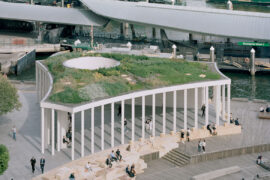
Pier Pavilion by Besley & Spresser provides a refreshing, architecturally thoughtful and versatile public space by the water at Barangaroo.
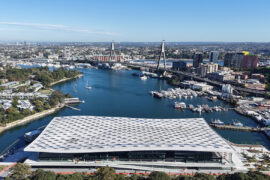
With a date now set for January 2026, Sydney’s landmark project is taking shape as a significant and welcome addition to civic life in the city.
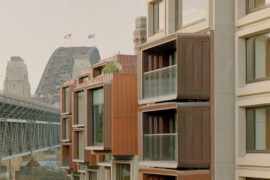
The INDE.Awards 2025 has crowned Sirius Redevelopment by BVN as the winner of The Multi-Residential Building, sponsored by CULT. This ambitious project redefines urban living in Sydney’s historic Rocks precinct while preserving heritage, reducing embodied carbon, and elevating residential design.
The internet never sleeps! Here's the stuff you might have missed
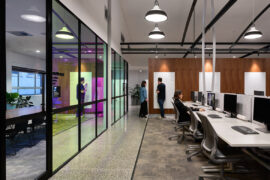
Architectus’ new headquarters for Q-CTRL addresses complex technical requirements while creating an enjoyable place to work.

Carr’s largest residential project to date integrates concrete, steel mesh and landscape across 122 apartments in Melbourne’s Brunswick.
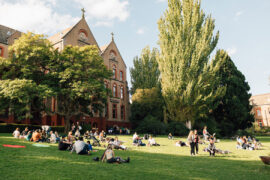
Abbotsford Convent has appointed Kennedy Nolan to guide the next stage of development at the heritage-listed Melbourne precinct, continuing its evolution as a cultural and community landmark.
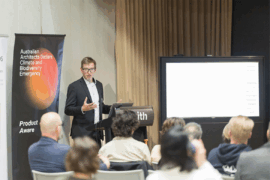
In a landscape clouded by data and greenwash, Product Aware offers architects and designers a common language for sustainability. Embraced by suppliers – including Milliken – it is setting a new benchmark for trust and bringing clarity and accountability to material specification.